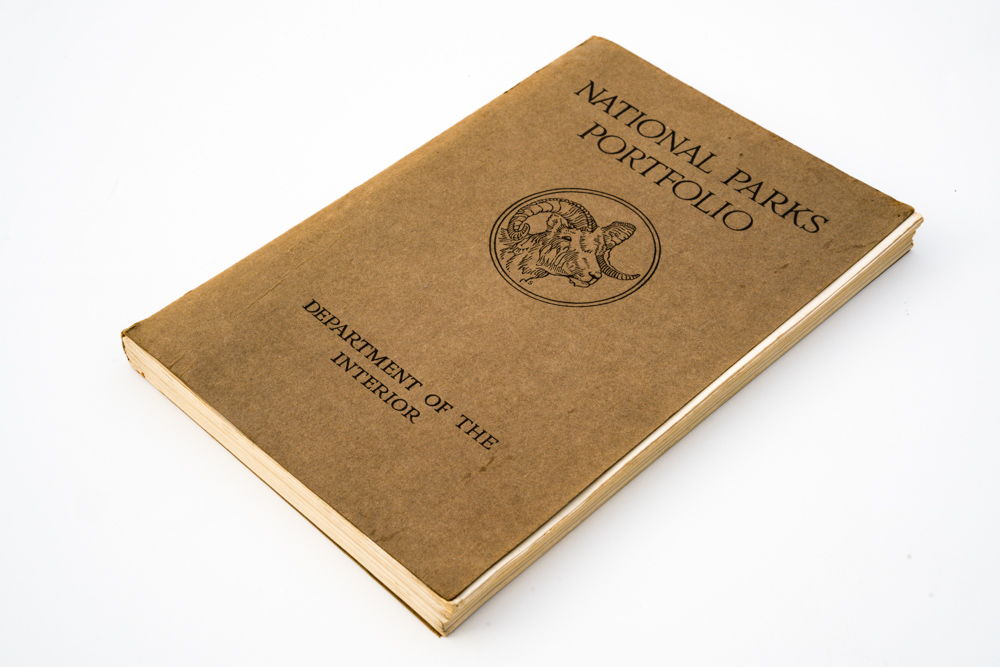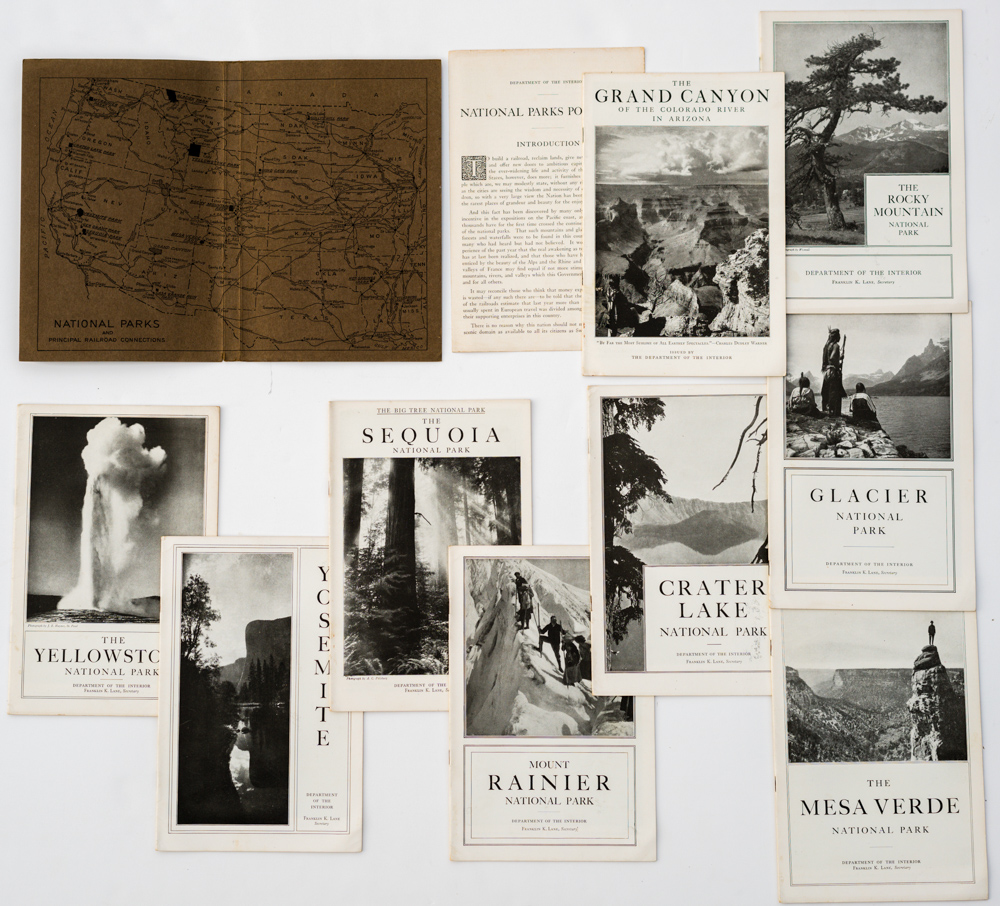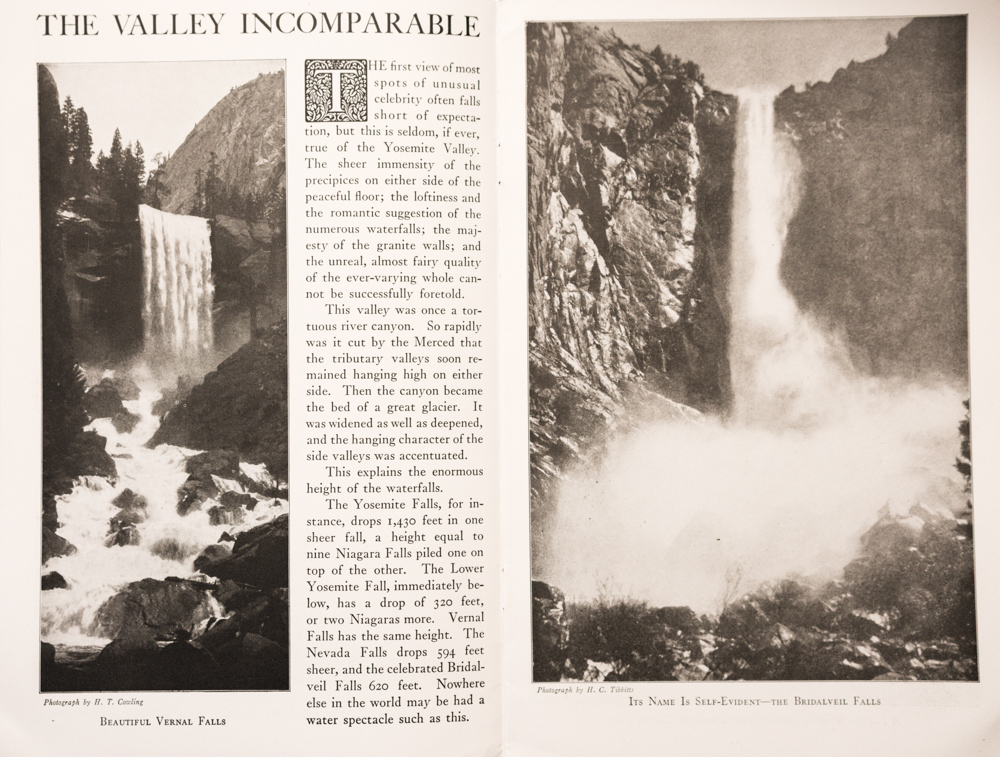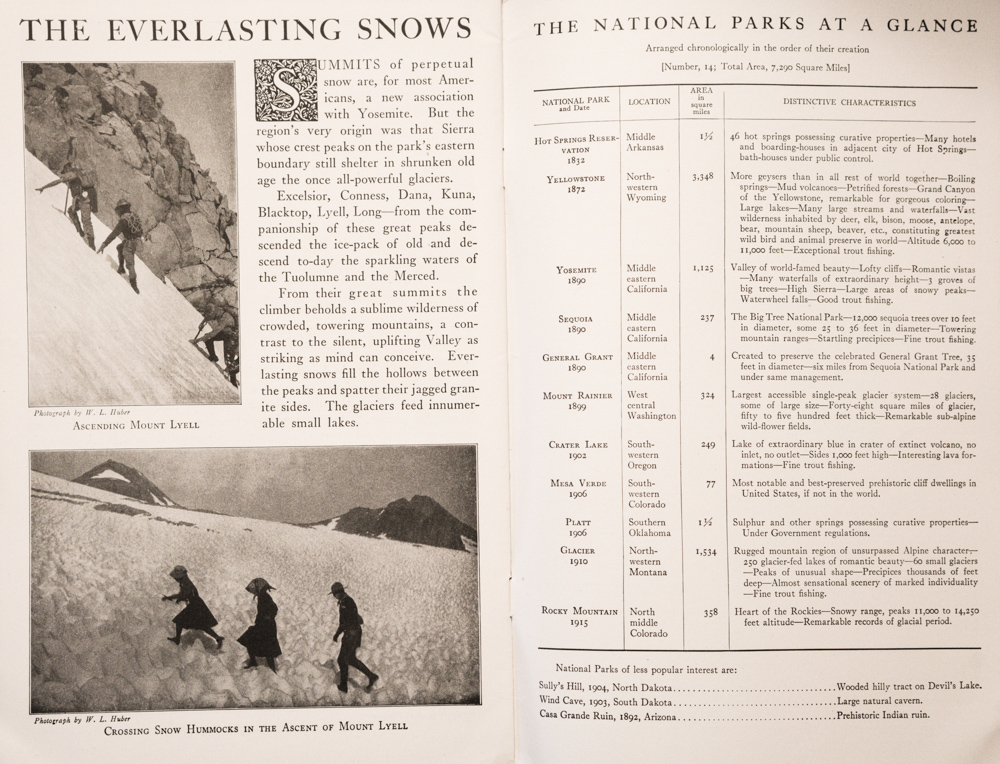The First National Parks Photography Book
15 Comments
As you all know, 2016 marks the 100th anniversary of the National Park Service. What is less known is that 1916 is also the year when the first photography book about the national parks, National Parks Portfolio, was published.
It was no coincidence. As recounted in the film by Ken Burns and Dayton Duncan, The National Parks: America’s Best Idea, Stephen Mather built a formidable publicity machine to advocate for the creation of a new federal agency to oversee what had been a haphazard collection of National Parks with inadequate protection and management. National Parks Portfolio was a centerpiece of that effort.

The cover of the publication gives credit to the Department of the Interior, however, the government had allocated no budget to cover its cost. So the financing model deployed by Mather was the same as some of today’s self-published photography books: fund part of it out of his own pocket, and look for corporate sponsorship for the rest. Except that at more than one million of today’s dollars ($48,000 in 1916), amounting to $3.8 per copy with a first printing of 275,000, that was an ambitious project by any measure, dwarfing any self-publication project that I know. The “sponsors” turned out to be the Western railroads – there was no Eastern national park yet. Over time, Mather would partner with them to bring more attention to the parks, and more customers to them, a win-win situation. Although the automobile and the quintessential American road trip would become in time the popular way to travel the parks, the trains were the mainstay of early 20th century long distance travel. You can see their influence on the interior of the Portfolio cover, a map entitled “National Parks and Principal Railroad Connections”, and the back of each booklet, which repeats the same map under the heading “How to reach the national parks”, with street addresses of 17 railways companies. As for the production of the book, instead of creating his own publishing company, Mather used the services of an established publisher, Scriber and Sons, hiring Robert Sterling Yard as the main writer and editor. Yard is uncredited in the first edition, but his name would appear prominently in the numerous subsequent ones.

Rather than a bound book, the publication consisted of a soft cover holding nine illustrated booklets of 24 pages and a trim of about 6×9 inches: Yellowstone, Yosemite, Sequoia, Mount Rainier, Crater Lake, Mesa Verde, Glacier, Rocky Mountains, and Grand Canyon – the later was still a National Monument at that time, but its significance was properly recognized. In the preface, printed in a separate spread, Mather writes: “This is the first really representative presentation of American scenery of grandeur ever published, perhaps ever made”. The previous paragraph summarizes in succinct words what fascinated me so much about the national parks, and motivated me to visit each of them: “Each park will be found to be highly individual. The whole will be a revelation”.

Although the printing quality pales compared to modern standards, and to original Watkins prints made 50 years earlier, leafing through the publication, you realize that some of your tripod holes have been in used for more than a century. This reminder that landscape photography had already reached a mature state back then helps put today’s achievements in perspective. The last page of the Yosemite booklet includes an image of two women in long dresses, followed by a man who looks like a ranger, hoping over snow hummocks in the ascent of Mount Lyell, whose glacier looks much larger than it is now. The location is still on my to-do list.

The whole publication is available in electronic format from the National Park Service. It was followed by at least six expanded editions, all produced by the US Government Printing Office, and since the contents are public domain, several publishers currently offer it as a new book.
As a book collector, I was delighted to find a first edition copy in good condition. As I work on my own national park photography book, expressly designed to be 2016’s version of National Parks Portfolio and using a very similar publishing model, it is cool to hold in my hands the one that started it all – exactly a century ago. In a century, our computers, tablets, and phones will certainly be obsolete, but this book has traversed a century, passing through the hands of many generations. In addition to his intrinsic power, it carries a great historic value. Although ebooks are a lot cheaper and more convenient, they lack the tactility and the focussed, distraction-free experience of reading a physical photography book. Viewing a form of art is an experience.


QT,
thanks for this post and the link. You are so right about the printed book. The last two sentences express what I have often said, though much less succinctly.
Look forward to your book!
Rick
I usually don’t comment on posts because I read them in an RSS reader, but I had to come to the real website to say thank you for this one. I love stuff like this!
I also have an original copy that I snagged on eBay many moons ago when few knew about the site, so I got it at a great price! Thanks for the background history on the portfolio and Happy 100th Birthday to our National Parks!
Tuan,
For me it’s all about the experience. If I can’t be in the park, printed media is what I can relate to best. I’ve collected a few related books over the years and now I’m going to add the old portfolio to my collection, while I await the arrival of Treasured Lands.
~Paul
Paul, you may be interested in my growing Pinterest board of national park books: https://www.pinterest.com/qtluong/national-parks-photo-books/
Went over to look at your pins QT. Notice you didn’t have the 1924 book called Beautiful Americs. It’s funny but I’ve found very little mention of this book.
Ginny
Excellent write-up, QT. I have at least a couple copies of this from Dad’s collection. He used this group of booklets as inspiration and guide when he set out to see the parks the summer after his discharge from World War II–the summer that turned into a lifetime photographing parks and other wilderness.
I was able to pick up a fairly well preserved copy of the 1916 version of the “National Parks Portfolio” last year. First I feel fortunate to have a found a copy, not only because my love of our national parks has no bounds, but its a valuable part of the heritage of everyone’s love of these our national treasures.
~Paul
Glad that you were able to find one. There are a lot of later edition copies, but the first edition is relatively rare, especially considered how many were printed. It’s such a part of the history of the NPS that I’m surprised nobody else mentioned it during the NPS100 year.
Something I forgot to mention earlier is that I inherited from my father-in-law a well preserved copy of the 1938 publication of the Park Service simply titled “Yosemite National Park”. By then , the Park Service” had undergone a significant reorganization and had uncreased the number of protect areas by a significant amount. At the time they named them Parks, Park Projects, Historical Parks, Capital Parks, Monuments, Monument Projects, Military Parks, Battlefield Sites, Battleground National Monument Projects and the National Cemetery.
The NPS started to issue separate brochures for each national park in 1920.
Just stumbled upon a first Ed. Presented to a lady who lived in the museum I work at by Sen Hoke Smith of Georgia in 1916. Such a great book. Was trying to find the value of it online. Any idea of the range?
Like with all collectibles, depends a lot on condition. I occasionally see copies on ebay for less than $50. Most of them are under $100.
I just came across you wrote up. My dad passed away, and as we were packing up my parents belongings, I came across this portfolio. It’s i. Great condition but 2 pages missing from the last booklet. I love to hike and visit these parks. I believe this belonged to my great grandpa.
Sorry to hear about your loss. Hold on to it! Not super valuable because so many were printed, but nevertheless, in my opinion, the most important publication in the history of the National Park Service